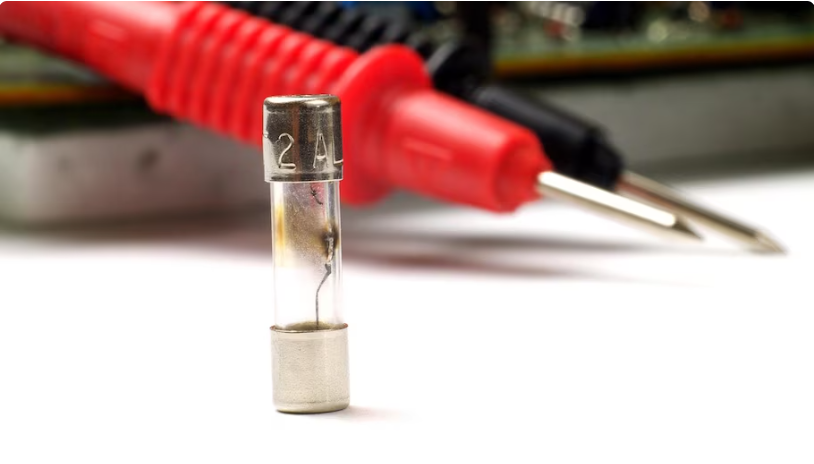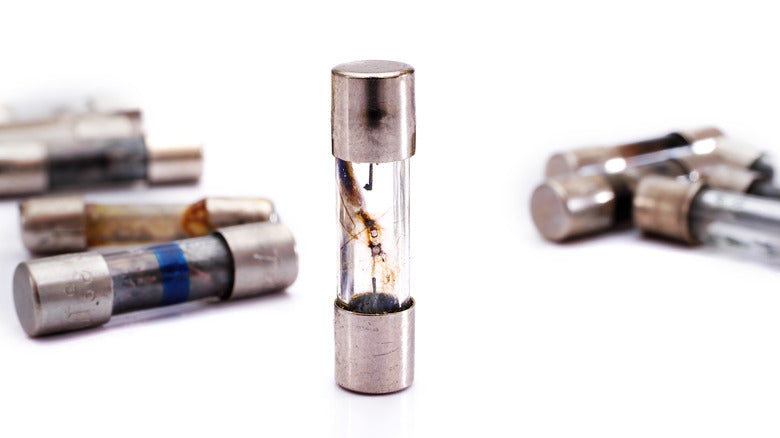7 Signs You Have a Blown Fuse
Beyond performing a visual inspection, blown fuses make their presence known all throughout your home’s electrical grid. Here are some tell-tale signs that some of your fuses have reached the point of no return.
1. There's a Short Circuit

A short circuit is a type of electrical fault that typically occurs when an electrical current deviates from its intended path (the circuit) due to insufficient resistance, often caused by factors like inadequate insulation or issues with the circuit breaker. This diversion of current can lead to an overload on nearby wires, resulting in a short circuit.
Short circuits commonly manifest with sparks, and in more severe cases, they may produce smoke or flames, accompanied by a crackling sound. Such events can cause damage or complete destruction of the connected devices. In the event of a short circuit, it is crucial to promptly disconnect the faulty device and inspect the outlet for any signs of damage. If damage is evident, it is advisable to seek the assistance of a qualified electrician for repairs.
2. There's a Ground Fault
Ground faults are a type of short circuit. They occur when the current-carrying wire touches a grounded system, like a grounded metal wall box or a grounded part of an appliance. In this case, "grounded" simply means a part of the system is touching the earth.
During a ground fault, too much current flows through unintended pathways, which can damage the systems the current is connected to. Unlike the standard short circuit described above, you're not likely to hear cracking sounds or see sparks or flames, but you might see strobing lines on a computer or television.
A ground fault can shock you when you touch surrounding outlets and devices, so you should stay clear from the affected area and call a local emergency electrician.
3. Your Electrical Outlets Are Damaged

Similar to various other systems within a household, electrical outlets have a finite lifespan. They can cease functioning either due to damage or obsolescence. Malfunctioning electrical outlets pose the risk of causing a power surge, commonly referred to as a power fault, which can result in a blown fuse or, more frequently, a tripped circuit.
Indications of a compromised outlet encompass burn marks, melting, chips, and cracks. A damaged outlet may also exhibit warmth upon touch. If you suspect damage to your outlet, it is advisable to engage a professional for a thorough inspection. Furthermore, if one outlet is experiencing issues, there's a possibility that others may be faulty as well. As a precautionary measure, it is a prudent idea to request the professional to inspect all outlets for potential problems to ensure overall safety.
4. Your Wiring Is Damaged
Just like damaged electrical outlets, impaired wiring has the potential to induce power surges and trip circuit breakers. Detecting damaged wiring, however, is more challenging as it is typically concealed behind your walls.
If you suspect the presence of damaged wiring, you can pay attention to buzzing noises, observe dimming lights, and inspect for any signs of discoloration or smoke. Warmth or vibrations upon touching wall outlets may also indicate damaged wiring. Identifying and addressing damaged wiring can be a complex task, making it advisable to seek the expertise of a professional for safe and effective repairs.
5. Your Circuit Is Overloaded

Overloading a power strip by connecting too many devices or consistently using a specific appliance, such as a microwave, can lead to tripped circuits. In such instances, the recommended course of action is to disconnect the devices from the power strip or unplug the problematic appliance, depending on the situation. Subsequently, you should proceed to your circuit breaker and reset the associated circuit switch.
To prevent a recurrence of the issue, it is advisable to redistribute some of the plugs in your power strip to another outlet. If the problem is attributed to a single appliance, unplugging it when not in use can serve as a preventive measure.
6. You Have the Wrong Fuse Type
Fuses may look similar, but there are plenty of designs, amperages, and sizes. In other words, it is all too easy to accidentally insert an incorrect fuse, which leads to all kinds of problems with your electrical system down the line. At best? The fuse blows, requiring replacement. At worst, that fuse damages the circuit, requiring costly repairs, or leads to a fire. Open the fusebox and take a look at the fuses. Do any look out of place? If so, call a professional, as you shouldn’t attempt to remove incorrectly-sized fuses on your own.
7. Your Electrical System Is Outdated

Thanks to modern technology, we're using more electricity than ever. This increased usage can strain older electrical systems not built for today's high demand. If your circuits frequently trip, but you don't notice damaged outlets or wiring problems, you might have to cut down on daily electricity use or bring in a professional to upgrade your system.





